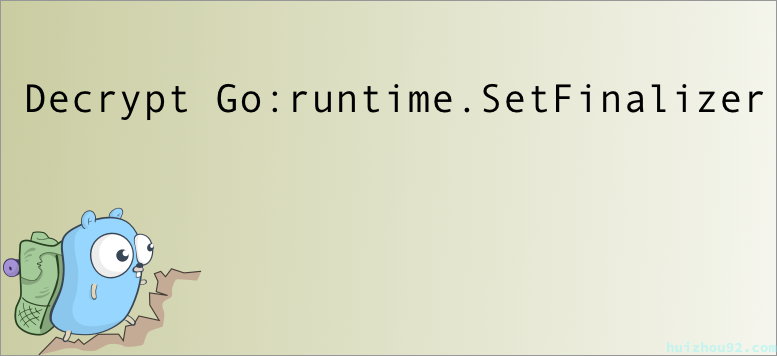If we want to do some resource release before an object is GC, we can use returns.SetFinalizer. It’s like executing defer to free resources before a function returns.
For example:
List 1: Using runtime.SetFinalizer
|
|
The official documentation explains that SetFinalizer associates a finalizer function with an object. When the garbage collector (GC) detects that an unreachable object has an associated finalizer, it will execute the finalizer and disassociate it. The object will be collected on the next GC cycle if it is unreachable and no longer has an associated finalizer.
Important Considerations
While runtime.SetFinalizer can be helpful, there are a few critical points to keep in mind:
- Deferred Execution: The
SetFinalizerfunction will not execute until the object is selected for garbage collection. Therefore, avoid usingSetFinalizerfor actions like flushing in-memory content to disk. - Extended Object Lifecycle:
SetFinalizercan inadvertently extend an object’s lifecycle. The finalizer function executes during the first GC cycle, and the target object may become reachable again, delaying its final destruction. This can be problematic in high-concurrency algorithms with numerous object allocations. - Memory Leaks with Cyclic References: Using
runtime.SetFinalizer, in conjunction with cyclic references, can lead to memory leaks.
List 2: Memory Leak with runtime.SetFinalizer
|
|
In this code, the object x will never be released. The correct approach explicitly removes the finalizer when the object is no longer needed: runtime.SetFinalizer(&x, nil).
Practical Applications
While runtime.SetFinalizer is rarely used in business code (I’ve never used it); it is more commonly employed within the Go source code itself. For instance, consider the following usage in the net/http package:
|
|
The go-cache library also demonstrates a use case for SetFinalizer:
|
|
In newCacheWithJanitor, when the ci parameter is greater than 0, a background goroutine is started to clean up expired cache entries periodically via a ticker. The asynchronous goroutine exits once a value is read from the stop channel.
The stopJanitor function defines a finalizer for the Cache pointer C. When there are no more references to Cache in the business code, the GC process triggers the stopJanitor function, which writes a value to the internal stop channel. This notifies the asynchronous cleanup goroutine to exit, providing a graceful and business-agnostic way to reclaim resources.
